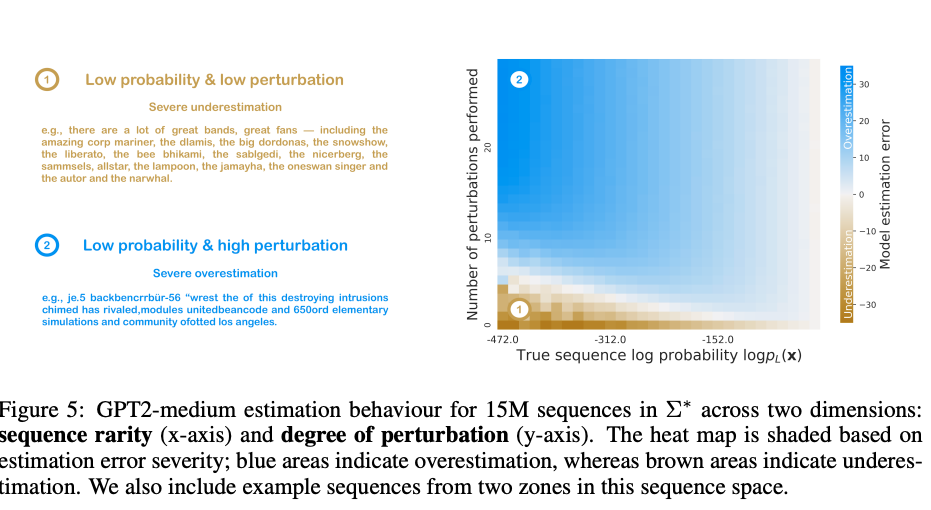Evaluating Distributional Distortion in Neural Language Modeling
Introduction
> ****Evaluating Distributional Distortion in Neural Language Modeling****
>
Benjamin LeBrun, Alessandro Sordoni, Timothy J. O’Donnell
-
What are the main contributions of the Distributional Distortion paper?
Evaluate LM performance on Heavy tail of sequence distributions
- instance level evaluation scheme
- Use a transformer generative model to define artificial languages
- can control distributional properties
- Language Model Performance
- Systematically underestimate probabilities of rare sequences
- Do so more for rare sequences
- overestimate probability of rare (ill-formed) sequences
- Greater amounts of training data alleviate underestimation
- underestimation is worse for distributions with lower entropy
- Productivity in Natural Language refers to the phenomenon that
a speaker can produce an infinite number of gramatically valid utterances- assigned nonzero probability
- LNRE zone refers to the
range of sample sizes which have nonzero probability of generating an unseen sequence- LNRE holds for language models and is expected to hold for many more orders of magnitude of sample data
- The Kleene closure is the
set of all strings of finite length
Method
- The Distributional Distortion paper: generates artificial languages with
GPT2-medium- sample from this language model’s distribution
- Distributional Distortion measures model estimation error using the
difference in logs of probabilities of sequence under true process and a trained language model process
Results
- Language model estimation error is minimized when
model reaches lowest cross entropy- note how GPT2 is able to perfectly replicate the training distribution after 5 epochs (left)

- Distributional Distortion results low probability sequences are
consistently underestimated- real rare event are underestimated in favor of perturbed rare events

- Distributional Distortion sequences with higher temperature (higher entropy) have
less estimation error- language models better model sequences with less heavy tails
Reference
@article{https://doi.org/10.48550/arxiv.2203.12788,
doi = {10.48550/ARXIV.2203.12788},
url = {https://arxiv.org/abs/2203.12788},
author = {LeBrun, Benjamin and Sordoni, Alessandro and O'Donnell, Timothy J.},
keywords = {Computation and Language (cs.CL), FOS: Computer and information sciences, FOS: Computer and information sciences},
title = {Evaluating Distributional Distortion in Neural Language Modeling},
publisher = {arXiv},
year = {2022},
copyright = {arXiv.org perpetual, non-exclusive license}
}
